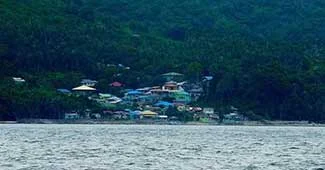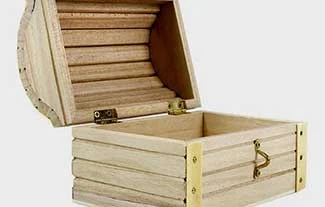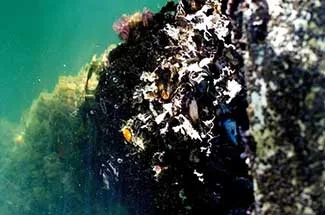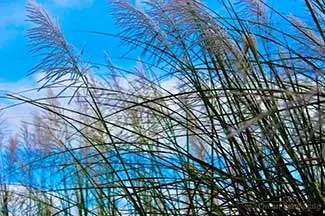Tingloy, Batangas: Historic and Folkloric Notes about some of its Barrios
This article revisits the otherwise forgotten history and folklore of the barrios of Tingloy, Batangas. The information contained herein has been taken from the so-called “Historical Data,” required by the administration of President Elpidio Quirino in 1951 of all Department of Education districts around the country to reconstruct local histories destroyed during World War II. These documents are now archived at the National Library of the Philippines.
For Tingloy, the barrio histories were originally filed under Bauan. These documents were not submitted until 1953. It would not be until 17 June 1955 that the barrios of Tingloy, Maricaban, Payapa, Pisa, Gamao and Talahib would officially separate from Bauan to become the new Municipality of Tingloy. All of these original barrios are included in this article.
 |
| Image source: Lawrence Ruiz - Own work, CC BY-SA 4.0, https://commons.wikimedia.org/w/index.php?curid=50977307. |
Gamao
This barrio was established in 1891 and was supposed to have been named after fishing net buoys. These must have been called “gamao” locally. Its original sitios were called Silangan, Bulihan, Gulod, Pinagdalupihan, Kanluran and Danao. Gamao used to be called the “peaceful mountain” and it “stands out vividly among the glamorous barrios of Maricaban Island…” Its earliest barrio lieutenants were Sixto Manalo, Pacifico Manalo, Lucas Candava, Braulio Persia, Esteban Bacay, Andres Bacsa and Arcadio de Chavez. Because of its relative isolation, Gamao was spared from the loss of lives and properties that plagued the mainland of Batangas through the Philippine Revolution, the Philippine-American War and World War II. In fact, the barrio served as an evacuation center in the Second World War.
Source: History and Cultural Life of Gamao
Maricaban
This barrio was supposedly named after a wealthy woman named Maria who tried to protect her wealth from Moro pirates by stashing this in a chest, called “kaban1” in Tagalog, that she had hidden somewhere. The barrio had jurisdiction over Maricaban Proper, half of Pinagkurusan and a sitio called Makawayan. Its earliest settlers were one Vicente Maneja and presumably his wife/partner Eriberta Mariño; Canuto Vargas and “his lovely wife” Limbania Sarmiento; and Tomas Catambay and his wife Maria Bacal “who was a very rich old woman.”
The earliest Spaniards who first set foot on Maricaban were at first looked upon with suspicion but were eventually accepted. At the height of Moro piracy during the Spanish colonial era, Maricaban was frequently invaded, often at night. The Americans first arrived in Maricaban in 1901 and took men from the barrio with them to use as guides. During the Philippine-American War, US Army soldiers almost burned down the barrio in their search for “insurrectos,” as Filipino freedom fighters were known. Late in World War II, America planes bombarded Japanese ships near the coast of Maricaban. These were laden with “kerosene, gasoline, food supplies and even ammunitions.” Regrettably, the air raid led “to the burning of all types of houses in the barrio from palatial homes to the small nipa shacks.”
Source: History and Cultural Life of Maricaban
 |
| Maricaban was supposedly named after a chest or "kaban" that a woman named Maria hid. Image source: Michael's Make Creativity Happen. |
Papaya
This barrio was established in 1870; and is so named because the first settlers were supposed to have found the place abundant with papaya trees. Its original families were the Garcias, Atienzas, Evangelistas and Datingalings. About 10 people were killed from 1896 to 1900, presumably because of the Philippine Revolution and subsequent Philippine-American War. In 1945, just before the liberation of the barrio by troops of the United States Army, civilians in the barrio killed Japanese soldiers who presumably were trying to escape the advancing American forces.
Source: History and Cultural Life of Papaya
Pirasan
This barrio’s name was supposed to have come from the word “piras,” meaning oyster, which used to be found in abundance along the coast of the barrio. The word “piras” was either dialect or archaic Tagalog because the more generally known Tagalog word for oyster is “talaba.” The barrio was divided into the following sitios: Central, Pirasan, Punta Guarda, Santol and Ibabao. Its original settlers were the families of Virgilio Binay and his wife Elena; and Alberto de Chavez and his wife Rosalia.
During the Philippine Revolution, men of Pirasan were drafted into the “revolutionary force,” presumably the Katipunan; but were reluctant to leave their homes undefended. During the Philippine-American War, some “insurrectos” fled to Maricaban to escape US Army troops. In World War II, guerrilla forces took hold of Pirasan. These forces were under a Visayan native by the name of Captain Tibay who was ex-USAFFE and a Bataan veteran. Their mission was primarily to gather information about Japanese movements, presumably along the Verde Island passage.
Source: History and Cultural Life of Pirasan
Pisa
This barrio was established during the Spanish colonial era and was, according to folklore, named after a big tree with an edible fruit that grew inside the barrio’s cemetery. There is, indeed, a pisa tree called the areca palm in English2. However, this palm, while endemic to the Philippines, can be found more in Mindanao and Basilan. The barrio’s original families were those of Valentin Magbuhos, Joaquin Garcia, Sixto Garcia, Nicanor Corona, Alejandro Hayag, Angel Adame and Felipe Garcia. In World War II, five people in the barrio were shot dead by the Japanese on suspicion of being members of the guerrilla movement.
Source: History and Cultural Life of Pisa
Talahib
This barrio was so named because in the old days, part of its land was covered with tall reeds called “talahib” in Tagalog. It was established by the Atienza family during the Spanish colonial era. Its sitios were called Bago, Pulambule, Talahib Proper, Salong, Tibag and Kalatagan. Its original families were those of Sergio Atienza, Francisco Atienza, Eleuterio Atienza, Ambrocio Dolor, Adriano Manalo, Policarpio Bagos, Placido Axalan, Hilario Castillo, Florentino Castillo and Segundo Beloso.
In the early nineteen century, Spaniards first arrived in the barrio aboard boats. They were so hostile that the barrio’s inhabitants fled. Late in the same century, the barrio suffered from food shortage. People could not afford to buy rice and subsisted on root crops, bananas and coconuts. In World War II, local boats were mistaken by American PT boats3 as Japanese transport and destroyed by mistake.
Source: History and Cultural Life of Talahib
Tingloy
In the late fifties when these barrio histories were collected, what is now the town of Tingloy was just one of the barrios of Bauan. This local history, therefore, was in most likelihood about what is now the town center. According to folklore, Moros who frequently visited the island during the American era could see many plants “with long and short thorns.” This plant was called “tinghoy4,” and it was from this that the then-barrio would be named.
Tingloy’s earliest inhabitants were said to have been immigrants from Taal. The first family to settle the barrio was that of one Jose Martinez and his wife Micaela Balog. During the Spanish era, Moro pirates frequently came to raid, abusing women and taking them away to sell as slaves. The Guardia Civil who were sent to the barrio to enforce the law were, instead, the ones who stole from the people. In 1921, Tingloy was visited by would-be Commonwealth President Manuel L. Quezon. In World War II, the barrio became a port of call for boats bound for the Visayas and Mindanao carrying evacuees escaping Japanese occupation.
Source: History and Cultural Life of Tingloy
2 “Pisa,” online at Philippine Medicinal Plants.
3 PT boats or patrol-torpedo boats were “fast attack craft used by the United States Navy in World War II. “PT Boat,” Wikipedia.
4 One Internet web site called “Philippine Traditional Knowledge Digital Library on Health” says that the plant is an aphrodisiac, but provides no other useful information.



